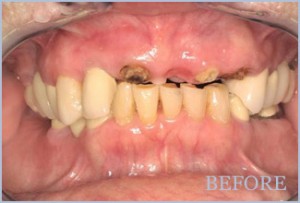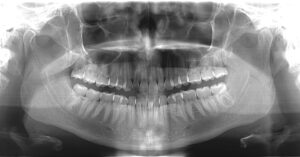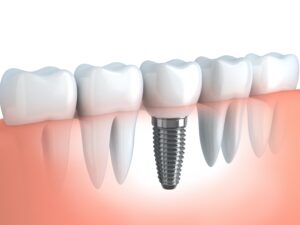Header logo
header top contact widget
Oral Sedation
Cut Dental Costs With Simple Steps
Posted on Dec 15, 2021 by William J. Claiborne, DDS MS
In order to avoid costly repairs on our vehicles, we rotate our tires, have the oil changed periodically, and make sure certain fluids are at sufficient levels. This is why our annual inspections are so important; risks can be pointed out to keep us safely on the road.
The same is true with our family’s health. We stay proactive by eating healthy, staying active and having regular check-ups along with periodic screenings.
It simply makes sense to be committed to preventing problems or catch any that do arise at early stages. Research has shown that your oral health deserves the same commitment you give to maintaining a healthy body.
Studies have found a correlation between the bacteria of periodontal (gum) disease and serious problems elsewhere in the body. These include heart disease, stroke, diabetes, arthritis, preterm babies, impotency and more.
Another reason to maintain a healthy smile is to save money. By devoting about 5 minutes per day to your oral hygiene routine, coupled with having dental exams and cleanings every six months, you can prevent many problems from occurring in the first place. The reward is a savings in time and expense that may be needed for repairs – repairs that may have been prevented from occurring in the first place.
Your twice-a-year dental check-ups are opportunities to remove tartar. Tartar is a cement-hard mass of oral bacteria that forms when plaque (the sticky film that coats teeth and gums) is not removed thoroughly attaches to teeth and can no longer be brushed or flossed away.
Both plaque and the hardened mass of tartar are the result of accumulated bacteria. Oral bacteria continually reproduce in the mouth, which provides a warm, dark and moist environment. As they thrive and reproduce, they attack gum tissues.
As they amass to levels beyond what the immune system, oral bacteria can lead to gingivitis (an early stage of gum disease). Unresolved, gingivitis can develop into periodontal disease, an infection. Eventually, periodontitis develops, which is an advanced level of gum disease. At this level, teeth often loosen and must be removed.
While gingivitis causes tender gums to bleed when brushing, periodontal disease symptoms are more severe, including persistent bad breath, sore gums that bleed easily, gums that darken in color, receded gums, and pus pockets that form between teeth.
As devastating as adult tooth loss can be, the potent bacteria of gum disease can enter the bloodstream through tears in disease gum tissues. Research has shown the infectious bacteria of gum disease can activate or worsen the development of certain pathogens.
Obviously, oral bacteria is highly potent. However, it’s easy to control with twice daily brushing and daily flossing combined with regular dental checkups. For added protection, limit sugary snacks and either swish after eating or chew sugarless gum when brushing is inconvenient. Not only will you help to reduce your risk for cavities and gum problems, you’ll be able to enjoy fresher breath and smiling confidence.
It is also important to respond early to signs and symptoms of gum disease. As mentioned above, things like frequent bad breath or seeing blood in the sink when brushing are warning signs that something is wrong.
A periodontist is a dentist who has specialized skills in the diagnosis and treatment of all levels of periodontal disease. He or she can also recontour the shape of gums and place dental implants for optimal results.
If you have not seen a dentist on a regular basis, you may be experiencing symptoms that indicate gum disease. As you would respond to a warning sign with your overall health, so should you with your oral health.
Begin with a thorough examination to determine what your needs are and the best way to achieve and maintain good oral health. You’ll be supporting your overall health in addition to having a confident smile.
If dental fear has prevented you from having regular dental care, ask about sedation options. We offer both oral sedation and IV sedation (twilight sleep). Both are safely administered and you are closely monitoring throughout treatment.
You may wish to begin with a consultation. To schedule, call 828-274-9440.
Dental Fear Can Lead To Gum Disease, Tooth Loss
Posted on Nov 23, 2021 by William J. Claiborne, DDS MS
Fear is a natural reaction to things that may harm us; it’s a safety mechanism activated by the brain. Take snakes, for instance. Even harmless snakes tend to provoke an initial reaction that warns of impending danger.
Some fears are learned, however. Some people are afraid of dogs, usually stemming from a frightful encounter as children. The incident triggers something in the brain that reminds the individual, even into adulthood, that dogs are to be feared.
When it comes to the fear of dentistry, it often exists because of a traumatic incident in the patient’s past. Or, in some cases, it exists for unknown reasons. Too, certain smells, sounds or sights can trigger the “panicky” reaction some people have to dental visits.
As a periodontist in Asheville, I have a firsthand view of just what dental fear can do to oral health. Avoiding regular dental care is a sure recipe for cavities, periodontal (gum) disease, and eventual tooth loss.
Typically, adults who avoid dental visits feel they are doing an adequate job maintaining their oral wellness at home. In some minds, “I brush twice a day,” can be the justification to bypass recommended 6-month dental check-ups and cleanings.
Yet, even the best of at-home dental hygiene can be insufficient to the buildup of tartar.
Tartar is the hardened form of plaque, which is a sticky film of bacteria that accumulates in the mouth. In the form of tartar, this cement-hard mass of bacteria cannot be brushed or flossed away. It can only be removed by a dentist or hygienist using special tools.
While plaque can cause bad breath and a “furry” feeling mouth, tartar eats away at tender gum tissues and bores into tooth enamel. As it grows, it works its way below the gum line, creating inflammation in the gum tissues.
Early symptoms of gum disease, known as gingivitis, are tender or swollen gums. You may see blood in the sink when brushing teeth. Breath odor may be bad on a regular basis.
At this point, proper measures may be able to reverse the progression of these rapidly-reproducing bacteria. This requires thorough brushing (twice a day, at the very least), daily flossing, drinking lots of plain water, and using an oral rinse to control bacteria levels.
However, if tartar exists, it’s not going to go away. It will continue to amass and attack the gums and work its way into the tissues below. When the bacteria reach an uncontrollable level, they become infectious.
Think of gum disease bacteria as you would water in a pan on the stove. The heat will eventually cause bubbles to form on the bottom of the pan. This can be likened to gingivitis.
However, as the water heats more, bubbles start to move to the surface. This can symbolize the development of gum disease. The symptoms of gum disease include gums that turn red and bleed easily and persistent bad breath.
When advanced stage periodontal disease develops (periodontitis), imagine the water at full boil. Unfortunately, once aboil, the roil continues even after you remove the pan from the heat. This is known as systemic inflammation.

Gum disease is the nation’s leading cause of adult tooth loss. Yet, the bacteria that destroy gums and the structures that support natural teeth don’t remain confined to the mouth. Through tears in diseased gum tissues, these infectious bacteria can enter the bloodstream.
Research has correlated oral bacteria to a long list of serious health problems. Some can be activated by the bacteria of periodontitis, some are worsened. These include heart disease, stroke, Alzheimer’s disease, arthritis, diabetes, preterm babies, erectile dysfunction (ED), some cancers (including pancreatic), and more.
Obviously, these bacteria are potent and a threat to overall health. For those who avoid dental care due to anxiety or fear, knowing all this is not necessarily going to change their resistance. We understand that it’s still difficult to overcome the challenges even knowing there are risks.
There are options, however, for even high fear dental patients.
In our office, we offer I.V. sedation (“twilight sleep”) as well as oral sedation. Oral sedation is in pill form and creates a totally relaxed feeling. It enables patients to recover quickly and offers an amnesiac effect.
I.V. sedation is a deeper level of sedative. This places patients in a sleep state and erases most or all memory of the procedure after. With both sedations, however, we apply numbing medications to the area being treated to create optimal comfort for patients. We want patients to be in total comfort throughout their treatment, regardless of the addition of sedation.
We also have a reputation for treating our patients with respect and a gentle touch. We are just as committed to comfort for patients who do not want to be sedated as we are for those who are. Our goal is to help each person achieve a healthy, confident smile.
One of the most satisfying parts of my specialty is helping a once-fearful patient achieve a healthy, confident smile and see dental care as a welcomed part of their health care commitment.
If you are ready to get past your dental fears so you can have the smile you desire, begin by calling our Asheville periodontal office at: 828-274-9440 and speaking with our friendly staff. You can begin with a consultation, if desired.
Replace Teeth With Dental Implants Makes Good Sense
Posted on Nov 16, 2021 by William J. Claiborne, DDS MS
There’s a reason your general dentist is so determined to help you keep your natural teeth. When he or she recommends a crown (‘cap’) on a tooth to prevent potential removal (at the time or in the future), it is because a lost tooth is problematic in many ways.
First, the portions of teeth you see above the gum line stay in stable position because of the roots that hold it. Tooth roots (think “legs”) are supported by the upper or lower jaw bone. Larger teeth may have four roots. Some of the smaller teeth have only one.
These roots are beneficial to the health of the jaw bones. Tooth roots are connected to the jaw bone by veins and nerves that run from the tooth’s interior and out the bottom of each root leg. These vessels carry blood to the bone while providing a sort of stimulation that helps the bone to maintain its mass.
Think of the stimulation that tooth roots provide to how you might muscle atrophy. We all know that muscles, not used, will shrink in mass. When the jaw bones are lacking stimulation by the tooth roots they’re designed to hold, bone mass begins to decline.
Bone loss is the reason for a long line of problems. When bone loss occurs next to an area where natural teeth are held, those teeth are most likely to be the next to be lost.
When bone loss begins, it accelerates with each passing year. And eventually, a shrinking jaw bone reveals itself in changes in facial appearance. Initially, there may be deep wrinkling around the mouth. The corners of the mouth turn downward. Jowls form and the chin becomes more pointed.
As bone loss becomes more severe, the mouth seems to sink into the face. The nose and chin get closer, giving a “granny look”. The thin jaw bone is also more vulnerable to breaks.
Bone loss is what causes a change in how partials and dentures fit. As the bone height declines, the denture or partial becomes less secure from the declining bone shape to which it was designed to fit. More-frequent applications of pastes and adhesives are needed. Relines help but only temporarily.
Teeth also serve to support neighboring teeth. Each tooth keeps the ones on either side and above (or below) in proper position. This supports the “bite” alignment. A misaligned bite (how upper teeth fit and interact with lower teeth) can result in teeth that become chipped, worn or fractured.
Bite misalignment can also lead to TMJ disorder. The TMJ are your jaw joints, which hinge the lower jaw to the skull. When a misaligned bite causes stress or strain on these joints, the result can be headaches, sore jaw joints, ear ringing, vertigo, difficulty opening the mouth fully, and sore muscles in the face, neck and shoulders.
The reason we advise replacing teeth with dental implants are many:
1). A dental implant recreates the presence of a natural tooth. It provides stimulation to the bone, halting the process of bone loss.
2). Dental implants do not rely on neighboring teeth for support, as in a crown-&-bridge combination. The crowning of bordering natural teeth to support a bridge is not needed. Thus, the integrity of surrounding teeth is protected.
3). Because dental implants are supported by the jaw bone, sturdy and dependable biting and chewing strength is restored. Eating a healthy diet of all the foods you love is again possible.
4). Dental implants come in many sizes and shapes, each system designed to accommodate various needs and preferences. This means your implant can be chosen to suit your long-term goals.
5). Dental implants have an extremely high success rate, higher than any implant-in-bone option.
6). Dental implants are designed to last a lifetime. With proper selection and maintenance, they will never need replacing or repair. This makes them an excellent investment.
A periodontist is a dental specialist who is skilled offers an advanced understanding when it comes to oral tissues as well as dental implants. The advantages of a periodontist in dental implant selection and placement are many.
A periodontal specialist is trained to understand the intricate concepts involved in selecting the proper type of implant and skilled at placing implants at proper depths and angles. A periodontist is also able to optimize patient comfort during treatment and throughout the healing phase.
Using his or her advanced training in the diagnosis and placement of dental implants, a periodontist can help you enjoy a higher potential for dental implant treatment that lasts a lifetime.
In our Asheville periodontal dental office, we offer some of the most advanced technology available. This technology, combined with our advanced skill level, can help you enjoy a comfortable, efficient experience that allows you to have optimal success.
To learn more, call our office at: 828-274-9440 to request a consultation. Or, begin with an initial periodontal examination.
Contour of Gum Tissues Is Important To A Smile’s Appearance
Posted on Oct 28, 2021 by William J. Claiborne, DDS MS
When people think of their smile, they tend to think primarily of their teeth. Certainly, having white, straight teeth are a major part of a smile’s appearance. In today’s cosmetic dentistry, porcelain veneers and crowns give an exceptionally natural appearance with excellent longevity and durability. However, the gum line that borders teeth can greatly affect a smile’s appearance, perhaps more than you’ve considered.
People with unflattering smile traits tend to “hold back” when smiling. They may smile with lips only or hold a hand in front of their mouths. Some men even admit to growing a mustache that extends down over the top lip to hide the teeth visible in a smile.
In addition to placing dental implants and treating all stages of gum disease, a Periodontist specializes in the treatment of the soft tissues of the mouth. As an expert in oral tissues, my advanced training enables me to contour gum tissues to provide a natural appearance and healthy seals around the base of teeth.
For several reasons, gum tissues can pull away from the base of teeth. This can occur from gum tissues becoming drier with age or over-zealous tooth brushing. Gums can also loosen their grip around teeth when teeth tilt out of their proper positions.
When the tight seal around the base of teeth is compromised, the tooth becomes more vulnerable to oral bacteria. Darker, sensitive tooth root segments may be exposed. This not only causes sensitivity, these areas become susceptible to bacterial penetration. As an entry point for oral bacteria, the tooth roots and bones that support teeth are more vulnerable to damage as well.
In cases when a tooth breaks near the gum line, a procedure known as crown lengthening may be able to expose enough of the tooth structure so a crown can be placed. This means the natural tooth can be saved rather than require removal. Once a natural tooth is removed, it brings with it a long list of decisions and associated costs.
Although protecting and saving teeth is the priority, gum contouring procedures, such as crown lengthening are also performed to enhance the appearance of a smile. Gum re-contouring is typically referred to as a “gingivectomy”. It is performed to remove the excess gum tissue that arches over the teeth most visible in a smile.
For example, for people who have a “gummy smile,” too much gum tissue is visible above upper teeth in a full smile. A periodontist can use his or her specialized skills to reshape the tissues to provide a more balanced smile line.
In this, crowns are typically placed in addition to having the gum height adjusted. The result? A smile is greatly improved when the gum line is contoured to blend attractively with gum tissue bordering neighboring teeth.
To begin, we numb the gum tissues and carefully trim the excess. As a Periodontist, I take specific measures to ensure a natural looking arch remains over the teeth while preserving the natural points that ‘dip’ between each tooth.
A gingivectomy performed with a dental laser provides our Asheville periodontal office patients with a number of advantages: (1) enhanced comfort; (2) precision lines; (3) minimal or no bleeding; and, (4) faster healing time.
It’s normal to experience some tenderness or swelling after the procedure. However, most patients do fine by applying an ice pack off and on for the first day. In most cases, over-the-counter pain medications are sufficient, however, we make prescription strength options available to ensure comfort during the healing process. Many patients tell us they needed no medication at all.
Healing time depends on each individual and can vary from a few days to a few weeks. The dental laser we use helps to reduce the amount of time needed for healing. For patients who smoke, healing times are longer due to smoking’s drying effect on gum tissues.
Most gingivectomies are followed by porcelain veneers or crowns to give a beautiful, even smile line.
For those who have avoided gum recontouring due to dental fear, we offer several sedation options, including oral and IV sedation. Oral sedation is a pill that helps patients relax. It also has an amnesiac effect, leaving most with little or no memory of treatment afterward.
IV sedation (also known as ‘twilight sleep’) places the patient in a deeper sleep state and erases memory of the procedure. It is administered by a doctor of anesthesiology for optimal comfort and safety. In our Asheville office, anesthesia is overseen by a medical doctor (MD) who is a board certified Anesthesiologist.
With both sedation options, patients are closely monitored with advanced safety equipment throughout treatment. We help patients understand that their fears and concerns are not unusual. Our doctors and staff respect each patient and provide gentle, compassionate care – at every appointment.
Treatment fees depend on the extent of the condition and whether crowns or veneers will be applied following treatment. In either case, beautiful results can occur, helping the individual who once ‘held back’ on smiling confidently.
A healthy smile is a benefit to our overall health. An attractive, confident smile is also an asset when it comes to self-image, helping us to feel good from the inside out! Call 828-274-9440 for a consultation to discuss a gingivectomy and what may be recommended for your specific needs.
Recent Posts
Categories
Archives
- September 2024
- August 2024
- July 2024
- June 2024
- May 2024
- April 2024
- March 2024
- February 2024
- January 2024
- December 2023
- November 2023
- October 2023
- September 2023
- August 2023
- July 2023
- June 2023
- May 2023
- April 2023
- March 2023
- February 2023
- January 2023
- December 2022
- November 2022
- October 2022
- September 2022
- August 2022
- July 2022
- June 2022
- May 2022
- April 2022
- March 2022
- February 2022
- January 2022
- December 2021
- November 2021
- October 2021
- September 2021
- August 2021
- July 2021
- June 2021
- May 2021
- April 2021
- March 2021
- February 2021
- January 2021
- December 2020
- November 2020
- October 2020
- September 2020
- August 2020
- July 2020
- June 2020
- May 2020
- April 2020
- March 2020
- February 2020
- January 2020
- December 2019
- November 2019
- October 2019
- September 2019
- August 2019
- July 2019
- June 2019
- May 2019
- April 2019
- March 2019
- February 2019
- January 2019
- December 2018
- November 2018
- October 2018
- September 2018
- August 2018
- July 2018
- June 2018
- May 2018
- April 2018
- March 2018
- February 2018
- January 2018
- December 2017
- November 2017
- October 2017
- September 2017
- August 2017
- July 2017
- June 2017
- May 2017
- April 2017
- March 2017
- February 2017
- January 2017
- December 2016
- November 2016
- October 2016
- September 2016
- August 2016
- July 2016
- June 2016
- May 2016
- April 2016
- March 2016
- February 2016
- January 2016
- December 2015
- November 2015
- October 2015
- September 2015
- August 2015
- July 2015
- June 2015
- May 2015
- April 2015
- March 2015
- February 2015
- January 2015
- December 2014
- November 2014
- October 2014
- September 2014
- August 2014
- July 2014
- June 2014
- May 2014
- April 2014
- March 2014
- February 2014
- January 2014
- December 2013
- November 2013
- October 2013
- September 2013
- August 2013
- July 2013
- June 2013
- May 2013
- April 2013
- March 2013
- February 2013
- January 2013
- December 2012
- November 2012
- October 2012
- September 2012
- August 2012
- July 2012
- June 2012


